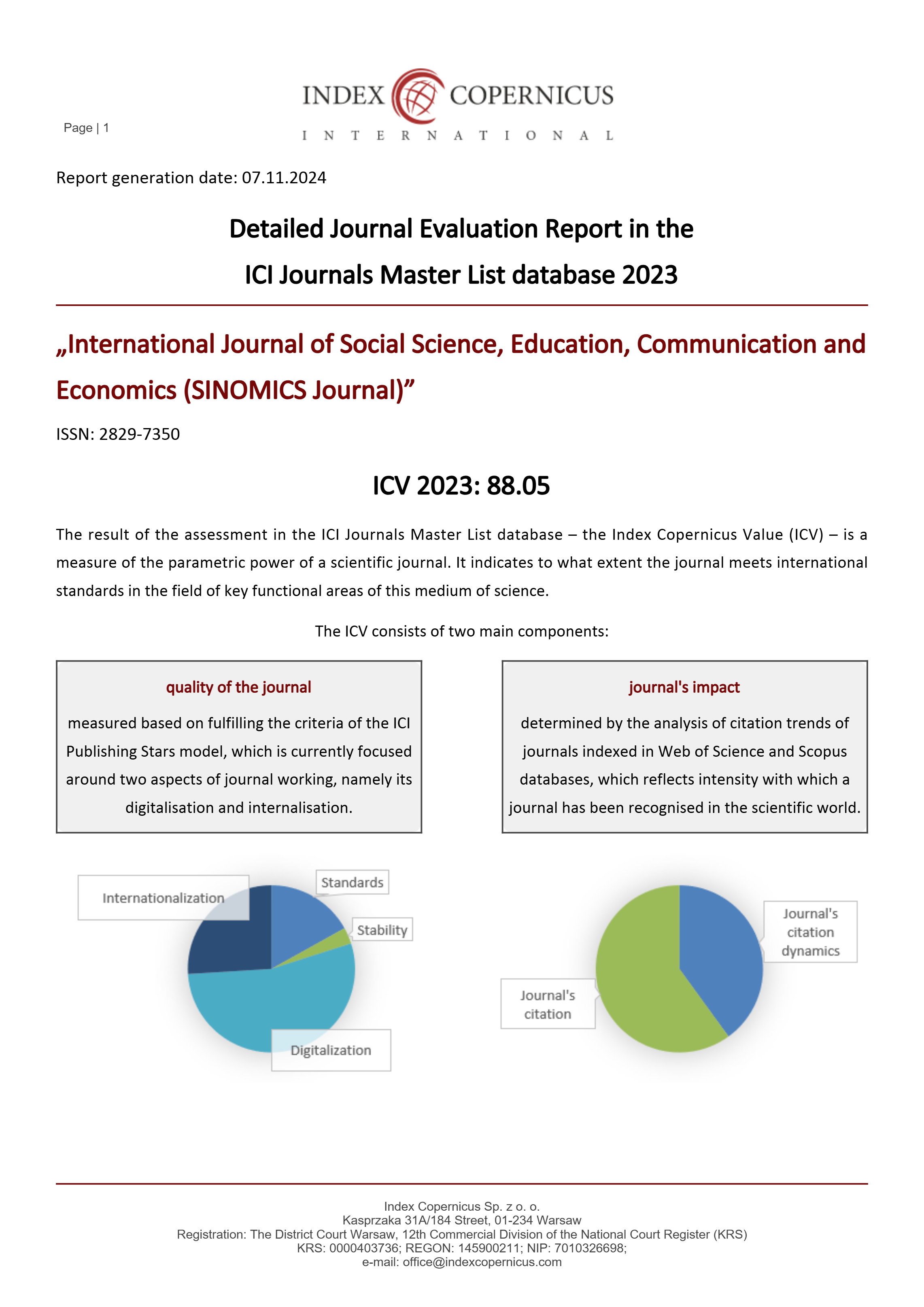Early Warning System Financial Crisis: Economic Factors and Political Factors
Main Article Content
Catherine Rachel Bunga Adjani
Nurbetty Herlina Sitorus
This study aims to determine the right indicators in making a financial crisis early warning system by combining economic and political factors. This research is descriptive research with a quantitative approach. The data used are secondary data collected through the official website of the institution and data publications, with variables Financial Crisis, GDP, inflation, interest rates, and political stability. The scope of this study is annual data from Indonesia, South Korea, Malaysia, the Philippines, and Thailand from 1996 to 2022. The data was analyzed through the logit method, with dependent variables 0 and 1. The results showed that the variables inflation, GDP, and domestic credit had a significant effect on the occurrence of the financial crisis.
Aizenman, J., Lee, J., & Sushko, V. (2012). From the Great Moderation to the Global Crisis: Exchange Market Pressure in the 2000s. Open Economies Review, 23(4), 597–621. https://doi.org/10.1007/S11079-011-9228-Y
Al Haq, Muh. A., & Sakti, R. K. (2019). Analisis Penerapan Sistem Deteksi Dini (EWS) Terhadap Perbankan di Indonesia. Universitas Brawijaya.
Biglaiser, G., DeRouen, K., & Archer, C. C. (2011). Politics, early warning systems, and credit rating agencies. Foreign Policy Analysis, 7(1), 67–87. https://doi.org/10.1111/j.1743-8594.2010.00123.x
Hady, H. (2020). Ekonomi Internasional. Teori dan Kebijakan Perdagangan Internasional (3 ed., Vol. 2). Ghalia Indonesia
Kamin, S. B., Schindler, J. W., & Samuel, S. L. (2001). The Contribution of Domestic and External Factors to Emerging Market Devaluation Crises: An Early Warning Systems Approach. International Finance Discussion Papers (IFDP). https://www.federalreserve.gov/econres/ifdp/the-contribution-of-domestic-and-external-factors-to-emerging-market-devaluation-crises-an-early-warning-systems-approach.htm
Kaminsky, G., Lizondo, S., & Reinhart, C. (1998). Leading Indicators of Currency Crises. International Monetary Fund Staff Papers, 45(1). https://www.imf.org/external/pubs/ft/staffp/1998/03-98/pdf/kaminsky.pdf
Krugman, P. (1979). A Model of Balance-of-Payments Crises. Journal of Money, Credit and Banking, 11(3), 311. https://doi.org/10.2307/1991793
Leblang, D., & Satyanath, S. (2008). Politically generated uncertainty and currency crises: Theory, tests, and forecasts. Journal of International Money and Finance, 27(3), 480–497. https://doi.org/10.1016/J.JIMONFIN.2008.01.006
Lee, H., & Rhee, C. (2012). Lessons from the 1997 and the 2008 crises in the republic of Korea. ADB Economics Working Paper Series, 298. https://doi.org/10.2139/ssrn.2018682
Obstfeld, M. (1986). Rational and Self-Fulfilling Balance-of-Payments Crises on JSTOR. The American Economic Review, 76(1), 72–81. https://www.jstor.org/stable/1804128
Obstfeld, M. (1996). Models of currency crises with self-fulfilling features. European Economic Review, 40(3–5), 1037–1047. https://doi.org/10.1016/0014-2921(95)00111-5
Radelet, S., & Sachs, J. (1998). The Onset of the East Asian Financial Crisis. NBER Working Paper. https://doi.org/10.3386/W6680






